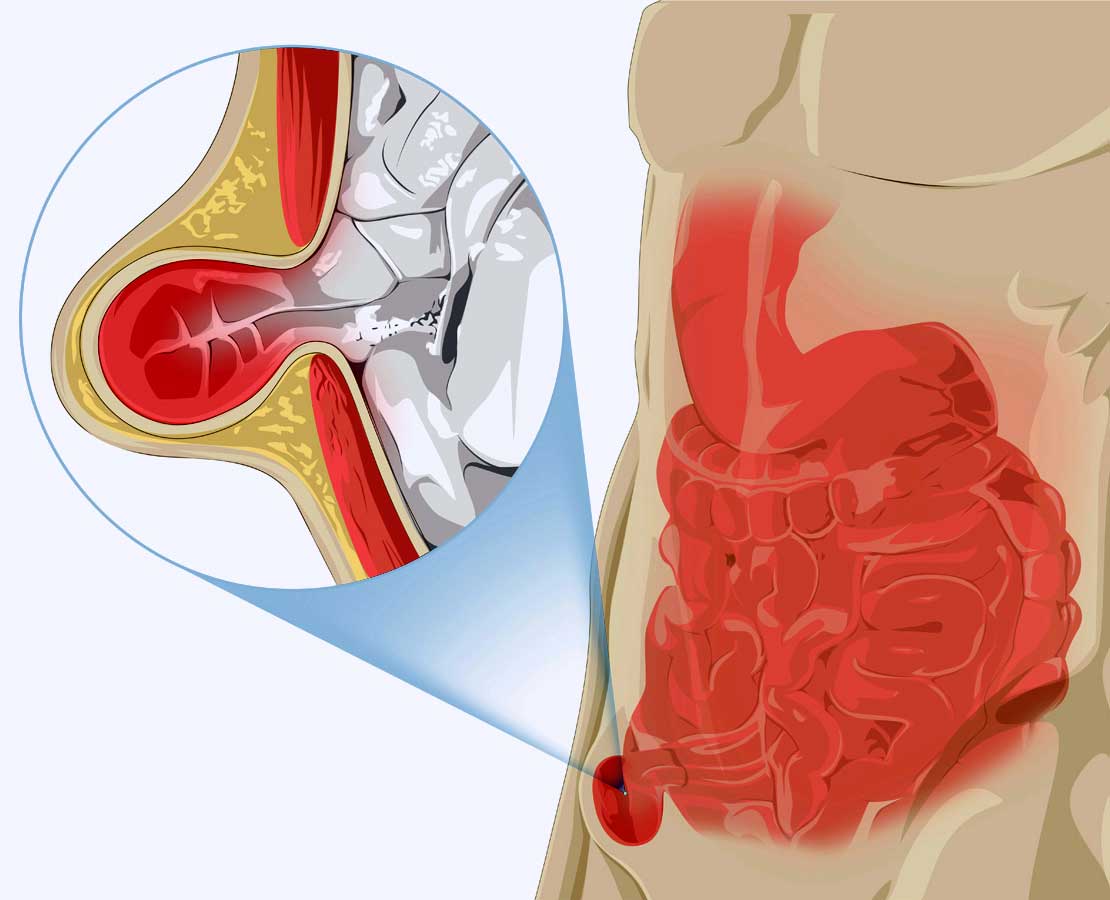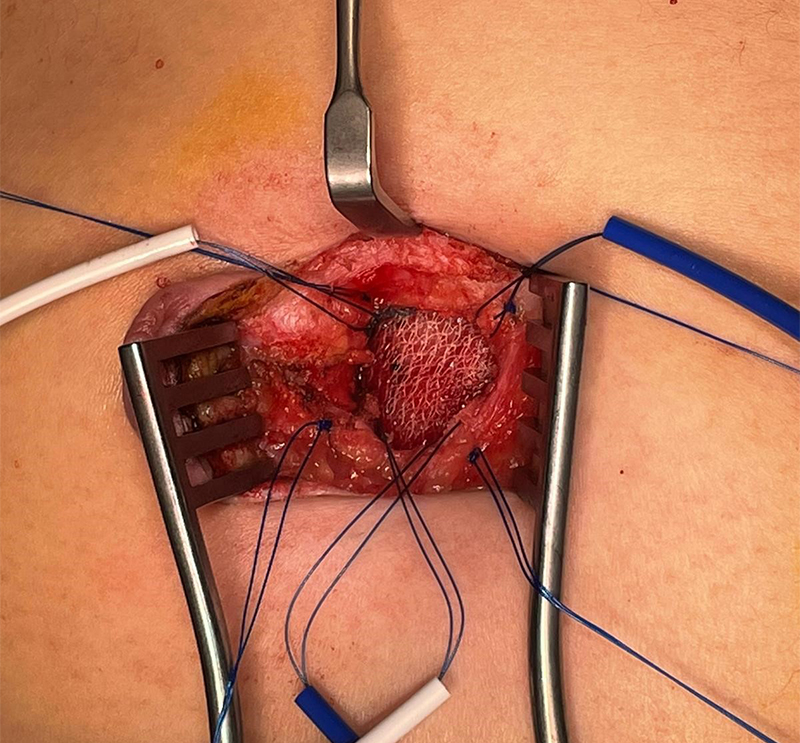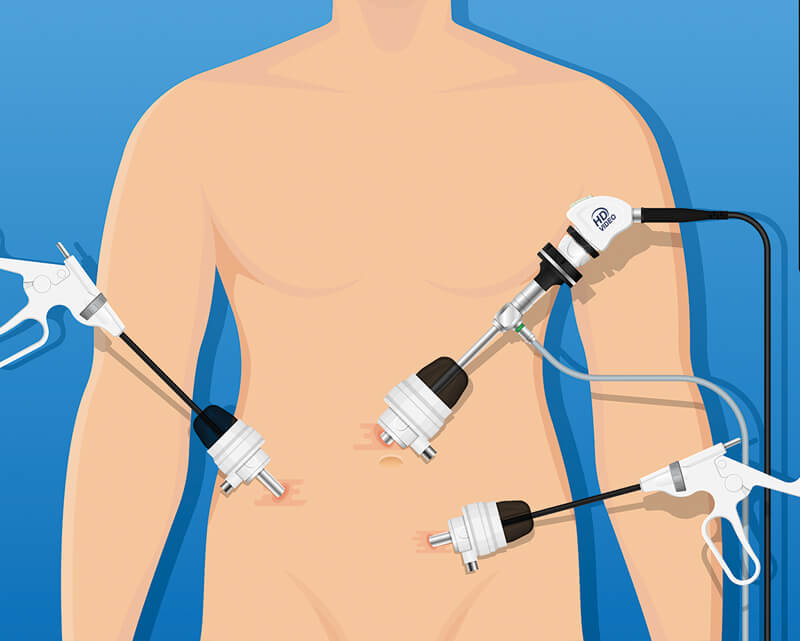Hernia Surgery
What is
Hernia?
A hernia occurs when an internal part of the body (e.g. an organ or tissue) pushes through a weakness in the muscle or surrounding tissue wall from where it normally resides, most notably resulting in a visible bulge. This can occur in various parts of the body, with the most common site being the groin.
Hernias typically require surgery to treat, which involves pushing the displaced organ or tissue back into place and reinforcing the weakened area of the muscle or tissue wall.
WHAT TO LOOK OUT FOR
While signs and symptoms vary depending on the type, location and severity of the hernia, common ones include:
- A visible lump or a swollen area
- A heavy feeling in the abdomen, especially upon bending
- Pain or aching sensation, especially upon exertion
- The lump disappears when one is lying down
- The lump becomes more prominent when coughing, straining or standing

Seek medical attention should you notice symptoms.
COMMON TYPES OF HERNIAS
INGUINAL HERNIAS
Making up around 9 in 10 of all hernias, inguinal hernias occur when a part of the intestines or fatty tissue pushes through into the groin area near the inner thigh. This primarily affects men and is often linked to ageing and repeated strain on the abdominal area.
FEMORAL HERNIAS
Similar to inguinal hernias, femoral hernias occur when fatty tissue or part of the intestine pushes through into the groin or the top of the inner thigh. This often affects older women.
UMBILICAL HERNIAS
This occurs when fatty tissue or part of the intestines protrude through the abdominal wall near the belly button. This is more common among infants, but can sometimes happen to adults as well.
INCISIONAL HERNIAS
This may occur after an abdominal or pelvic operation when tissue or part of the intestine protrudes through the site of the incision or scar.
WHY YOU SHOULD GET HERNIAS TREATED
Medical attention should be promptly sought – even if symptoms are initially mild – because hernias can often worsen over time. There also lies a risk of complications, such as a strangulated hernia and a bowel obstruction.
A strangulated hernia occurs when blood supply to a part of an organ or tissue trapped in the hernia has become cut off; and a bowel obstruction occurs when a part of the intestine entered the hernia and became blocked as it is trapped and tightly pinched in place.
WHEN TO SEEK HERNIA TREATMENT
You should see a doctor if you suspect you have a hernia, even if it isn’t bothering you much yet. That said, you should seek urgent medical care immediately if you have a hernia and you develop any of the following serious symptoms:
- Sudden and severe pain
- Feeling sickly
- Difficulty having bowel motions or passing gas
- The hernia becomes harder and cannot be pushed back in
These may be indicative of a strangulated hernia or a bowel obstruction, which are medical emergencies that require immediate hernia treatment.
HERNIA SURGERY
Hernias usually do not resolve on their own, and require surgery to treat. There are three main types of hernia surgery in Bangladesh that may be performed:

1. OPEN SURGERY
In an open hernia surgery, a single cut is made over the hernia, with the average incision being about 6 to 8cm long. The hernia surgeon then pushes the herniated tissue back to its rightful place, and a mesh is placed on the weakened abdominal wall (where the hernia bulged through), so as to strengthen the area.
If the hernia has already become strangulated, however, and part of the intestines has been damaged, the affected segment may need to be removed and the remaining ends of the healthy intestines joined together.

2. LAPAROSCOPIC SURGERY
This method of repair is the same as an open surgery, except tiny incisions are used (instead of a longer cut) to allow the insertion of small surgical tools to complete the procedure.
In laparoscopic hernia repair, a laparoscope (a tiny camera and light source) is inserted into the abdomen to visualise the hernia in real-time on a monitor. The hernia surgeon then uses this as a guide for his or her movements, which involves removing the hernia sac, placing the herniated organ back in place, and placing a mesh over the defect to strengthen the area.
